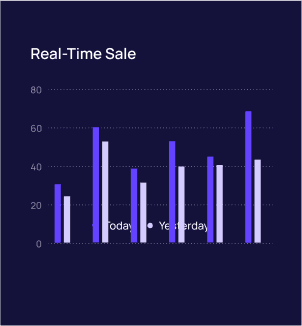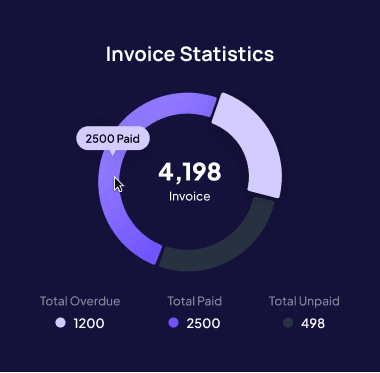The Power of Automated Financial Tools
The Power of Automated Financial Tools
Build a financial buffer during peak seasons to cover expenses in slower months.
Build a financial buffer during peak seasons to cover expenses in slower months.

Utilizing Short-Term Financing
Short-term financing can help businesses manage temporary cash flow gaps. These options provide quick access to funds when needed:
Business lines of credit: A flexible financing option that allows you to borrow as needed.
Invoice financing: Receive an advance on outstanding invoices to maintain cash flow.
Short-term business loans: Quick funding solutions for urgent expenses or opportunities.
Merchant cash advances: Suitable for businesses with high credit card sales but should be used cautiously due to high fees.
Using financing strategically ensures that businesses can cover short-term expenses without depleting cash reserves.
Reducing Debt and Interest Costs
Excessive debt and high interest payments can drain cash flow, limiting your ability to invest in growth. A proactive debt reduction strategy helps maintain financial flexibility.
Prioritize high-interest debt repayments to reduce financial strain.
Refinance loans for lower interest rates if better terms become available.
Consolidate debts to simplify payments and potentially lower interest costs.
Avoid over-reliance on credit for daily operations unless absolutely necessary.
Managing debt wisely ensures that more of your revenue is available for business development rather than being consumed by interest payments.

Optimizing Operating Expenses
Cutting unnecessary costs is a direct way to improve cash flow. Many businesses lose money through inefficient spending without realizing it.
Conduct regular expense audits: Analyze monthly expenses and identify non-essential costs.
Negotiate lower costs with suppliers and vendors: If you’ve been a long-term customer, request better pricing.
Reduce energy and utility costs: Simple changes like energy-efficient lighting and equipment can save money.
Streamline staffing costs: If necessary, use part-time or contract employees to adjust labor costs based on demand.
By keeping expenses lean, your business can operate more efficiently and preserve cash for strategic investments.
Diversifying Revenue Streams
Relying on a single source of income is risky. Expanding your revenue streams can help maintain consistent cash flow, even during economic downturns.
Introduce complementary products or services: Expand your offerings based on customer needs.
Explore new customer segments: Identify underserved markets that align with your business capabilities.
Adopt subscription-based models: Recurring revenue streams provide predictable cash flow.
Leverage e-commerce and digital sales: Online sales channels can provide additional revenue opportunities.
Diversifying income sources ensures that if one stream slows down, your business continues generating revenue from others.

Utilizing Short-Term Financing
Short-term financing can help businesses manage temporary cash flow gaps. These options provide quick access to funds when needed:
Business lines of credit: A flexible financing option that allows you to borrow as needed.
Invoice financing: Receive an advance on outstanding invoices to maintain cash flow.
Short-term business loans: Quick funding solutions for urgent expenses or opportunities.
Merchant cash advances: Suitable for businesses with high credit card sales but should be used cautiously due to high fees.
Using financing strategically ensures that businesses can cover short-term expenses without depleting cash reserves.
Reducing Debt and Interest Costs
Excessive debt and high interest payments can drain cash flow, limiting your ability to invest in growth. A proactive debt reduction strategy helps maintain financial flexibility.
Prioritize high-interest debt repayments to reduce financial strain.
Refinance loans for lower interest rates if better terms become available.
Consolidate debts to simplify payments and potentially lower interest costs.
Avoid over-reliance on credit for daily operations unless absolutely necessary.
Managing debt wisely ensures that more of your revenue is available for business development rather than being consumed by interest payments.

Optimizing Operating Expenses
Cutting unnecessary costs is a direct way to improve cash flow. Many businesses lose money through inefficient spending without realizing it.
Conduct regular expense audits: Analyze monthly expenses and identify non-essential costs.
Negotiate lower costs with suppliers and vendors: If you’ve been a long-term customer, request better pricing.
Reduce energy and utility costs: Simple changes like energy-efficient lighting and equipment can save money.
Streamline staffing costs: If necessary, use part-time or contract employees to adjust labor costs based on demand.
By keeping expenses lean, your business can operate more efficiently and preserve cash for strategic investments.
Diversifying Revenue Streams
Relying on a single source of income is risky. Expanding your revenue streams can help maintain consistent cash flow, even during economic downturns.
Introduce complementary products or services: Expand your offerings based on customer needs.
Explore new customer segments: Identify underserved markets that align with your business capabilities.
Adopt subscription-based models: Recurring revenue streams provide predictable cash flow.
Leverage e-commerce and digital sales: Online sales channels can provide additional revenue opportunities.
Diversifying income sources ensures that if one stream slows down, your business continues generating revenue from others.

Utilizing Short-Term Financing
Short-term financing can help businesses manage temporary cash flow gaps. These options provide quick access to funds when needed:
Business lines of credit: A flexible financing option that allows you to borrow as needed.
Invoice financing: Receive an advance on outstanding invoices to maintain cash flow.
Short-term business loans: Quick funding solutions for urgent expenses or opportunities.
Merchant cash advances: Suitable for businesses with high credit card sales but should be used cautiously due to high fees.
Using financing strategically ensures that businesses can cover short-term expenses without depleting cash reserves.
Reducing Debt and Interest Costs
Excessive debt and high interest payments can drain cash flow, limiting your ability to invest in growth. A proactive debt reduction strategy helps maintain financial flexibility.
Prioritize high-interest debt repayments to reduce financial strain.
Refinance loans for lower interest rates if better terms become available.
Consolidate debts to simplify payments and potentially lower interest costs.
Avoid over-reliance on credit for daily operations unless absolutely necessary.
Managing debt wisely ensures that more of your revenue is available for business development rather than being consumed by interest payments.

Optimizing Operating Expenses
Cutting unnecessary costs is a direct way to improve cash flow. Many businesses lose money through inefficient spending without realizing it.
Conduct regular expense audits: Analyze monthly expenses and identify non-essential costs.
Negotiate lower costs with suppliers and vendors: If you’ve been a long-term customer, request better pricing.
Reduce energy and utility costs: Simple changes like energy-efficient lighting and equipment can save money.
Streamline staffing costs: If necessary, use part-time or contract employees to adjust labor costs based on demand.
By keeping expenses lean, your business can operate more efficiently and preserve cash for strategic investments.
Diversifying Revenue Streams
Relying on a single source of income is risky. Expanding your revenue streams can help maintain consistent cash flow, even during economic downturns.
Introduce complementary products or services: Expand your offerings based on customer needs.
Explore new customer segments: Identify underserved markets that align with your business capabilities.
Adopt subscription-based models: Recurring revenue streams provide predictable cash flow.
Leverage e-commerce and digital sales: Online sales channels can provide additional revenue opportunities.
Diversifying income sources ensures that if one stream slows down, your business continues generating revenue from others.
Recent Posts
Recent Posts
Recent Posts

Similar Blog You May Like
Similar Blog You May Like
Similar Blog You May Like


Unlock Your Financial Potential with Automation
Create dynamic budgets with predictive insights and scenario planning to help you manage future cash flows.




Unlock Your Financial Potential with Automation
Create dynamic budgets with predictive insights and scenario planning to help you manage future cash flows.




Unlock Your Financial Potential with Automation
Create dynamic budgets with predictive insights and scenario planning to help you manage future cash flows.






